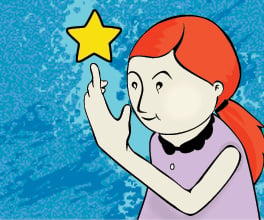Understanding copyright
When using images and text from your research in your own work, it's important to think about copyright.
Most works, including images and websites, are covered by copyright but services like Creative Commons Search limit your search to copyright free images that are free to use.
So what is copyright?
Copyright is a law that gives the person who made a creative work exclusive rights over how other people can use it.
Copyright covers things like photographs, artworks, music, books, plays and song lyrics. If you want to use these types of sources in your work you have to understand how they're covered by copyright, otherwise you might be breaking the law.
There are particular parts of copyright law that protect students who are using sources for their work at school. Nevertheless, it's good to know the copyright details of an image or work if you want to reproduce or change it.
Most libraries give you information about copyright in their catalogue. For example in the State Library Victoria catalogue you’ll find some images are in copyright and some are copyright free. This is because most artistic works and photographs are protected from the time the work is created until 70 years after the creator has died.
There are lots of places you can go to find out more about copyright but the key things to remember are:
- credit any sources you use correctly
- whenever you're using someone else’s words, ideas or creative work, make sure you say where they came from and who made them.
Reference details you'd collect for a bibliography are usually enough to credit a work.
Think about:
- who made the work (or who owns the copyright - for example an article written for a newspaper is usually owned by the newspaper, not the journalist)
- the name of the work
- when it was made
- where you took the image/text from
The best way to find copyright free images is to search using the Creative Commons Search or filter your Google search by Usage rights.





